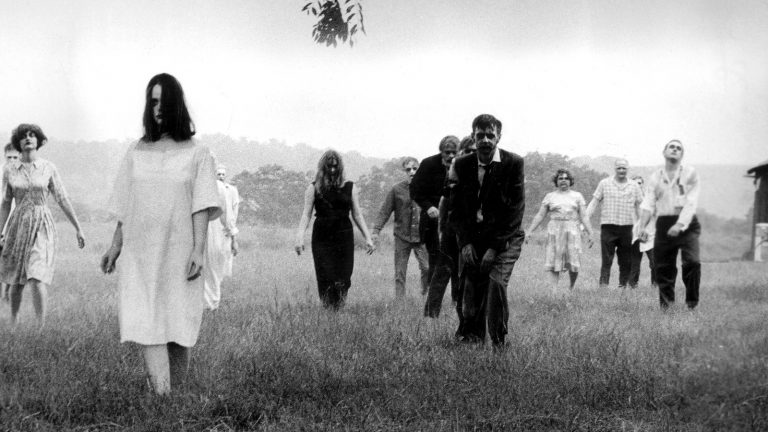October is upon us, and that means that it’s the season to snuggle under the blankets with some homemade popcorn and treat ourselves to the perennial feast of horror movies and monster flicks. But like all good art, there’s more than just entertainment behind the greasepaint makeup and fake blood. Monster movies offer a surprising amount of insight into the country’s cultural and political mindset at any given time. Most interesting of all is how the monsters themselves have changed, and how they can function as metaphors for those things that really arouse fear and anxiety in the minds of the movie-going public.
When we think of the classic monster movie, the images most likely to spring to mind are those of Dracula, the Wolfman, Dr. Frankenstein and his Monster, and the Mummy. Most of these were adapted from stories written in the 19th century, made their first forays into the cinema as silent films in the 1920s, and finally reached their peak in popularity during the 1930s with the iconic Universal Studios versions we still know and love to this day.
What do all these monsters have in common, and why were these various series so successful? In my book, Conform or Be Cast Out: The (Literal) Demonization of Nonconformists, I argue that the classic monster is frightening largely because he looks and behaves differently from ordinary people. He is singular, standing out in a crowd and refusing to submit to the expectations society places on him. From the aristocratic count who sucks the blood of beautiful women, to the bestial lycanthrope who runs about on all fours and howls at the moon, to the solitary Creature from the Black Lagoon, these monsters all represent the individual who poses a threat to the group. In some cases, this threat is real, as with vampires and werewolves. In others, the threat is either imaginary or manufactured by the hysteria of ordinary people, as in the Black Lagoon or the gentle, misunderstood creature brought to life by Dr. Frankenstein.
We can see secondary anxieties manifested in these characters as well; science gone wrong was an understandable concern at the tail end of the Industrial Revolution and the Enlightenment, when supposedly scientifically-backed techniques sterilizing “unfit” parents or lobotomies for the mentally ill were massively en vogue. We also see a certain level of xenophobia, with the heavy accent of Count Dracula and the exoticism of the Egyptian Mummy adding to the terror felt among American audiences. Still, nonconformity remained the uniting feature of these villains, and the implicit message was distrust that which is different, because you never know what kind of danger it could present.
This actually makes a lot of sense, and one could assume that the aspect of differentness would be a necessary prerequisite to any movie monster, but as American culture began to shift, we see that this is not the case. As the Soviet Union gained a foothold on the world stage, followed by communist China, Cuba, and other collectivist societies, the dominant source of anxiety in the American mind was no longer the alienated loner, but rather the mindless conformist. Hence, the arrival of the zombie movie, ushered in by George A. Romero’s classic Night of the Living Dead in 1968, and quickly expanding into a genre of itself. The monsters in Romero’s films are not scary because they are different, but because they are the same. They are not solitary shapes only half-glimpsed in silhouette in the dead of night; they are an undifferentiated throng lurching inexorably forward in broad daylight. Lacking the individual strength of a Wolfman, their strength is in numbers; killing one or ten or a hundred does no good, because there are always more. Lacking the superior cunning of a Dracula, they hunger for “braaaaains” and are driven by instinct rather than thought. In short, the zombie movie is an almost complete reversal of the traditional monster story. The collective is the bad guy; the individual is the hero. A perfect metaphor for the Cold War.
Where does all this leave us today? Looking around at the broader American culture and a seemingly growing hostility towards individualism, one might expect to see the return of the classic monsters, in which the group must protect itself against a radical outsider who refuses to follow the rules. Yet, it’s hard to observe such a trend in action, at least not in any clear cut way. Teen romances like Twilight have romanticized vampires and werewolves to the point that they are not only non-threatening, but desirable mates. Dystopian fiction like The Hunger Games casts large organizations, big businesses, or big governments as the villains. Even the social commentary of Jordan Peele’s Get Out and Us focus on group dynamics of race and class rather than individual conflicts. Meanwhile, remakes and derivatives of Romero’s zombie films remain popular, as do films like Midsommar, in which cults rather than individuals present the threat to the protagonists.
The Halloween Mask Index is a silly, albeit spookily accurate, way to predict the outcome of presidential elections based on which candidate’s face is a more popular choice for a Halloween costume. The Index has only been wrong once in a quarter century, failing to predict Joe Biden’s victory in the 2020 election, but in all other cases since Bill Clinton it has proved reliable. Maybe the trend in monster movies can be seen a similar cultural metric for the overall mood of the country. As long as the things that make us scream in terror are faceless organizations, creepy cults, and zombie mobs instead of lone madmen and things that go bump in the night, maybe individualism still retains a stronger hold on the American consciousness than we realize.














Add comment